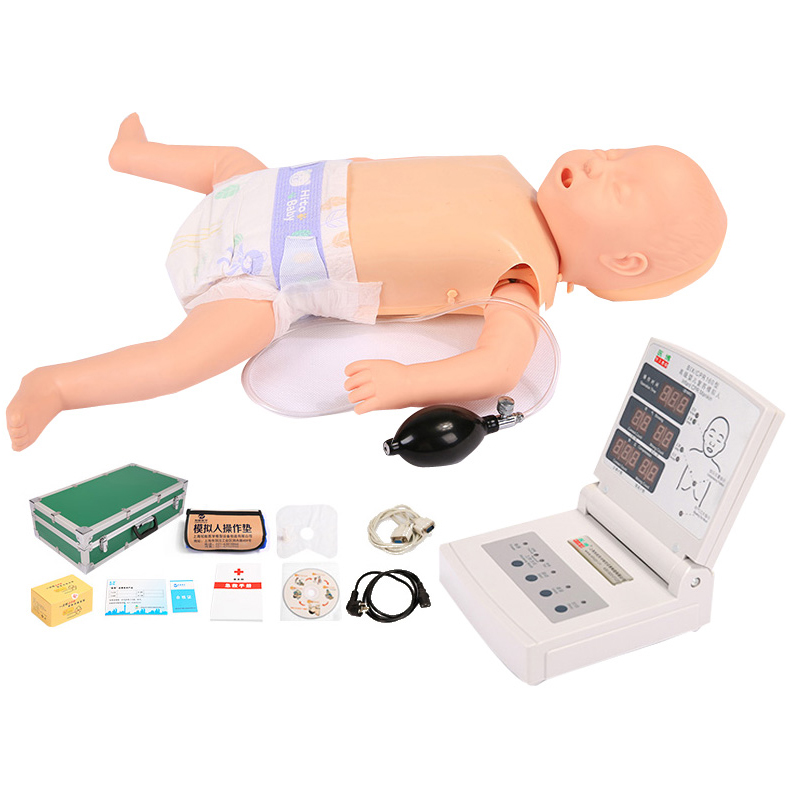Welcome to visitShanghai Chinon medical Model & Equipment Manufacturing Co., LTD
Through a series of careful design and material selection, the infant cardiopulmonary resuscitation model accurately simulates the physiological characteristics of infants, providing a highly simulated platform for medical education, first-aid training and practical operation. Here are a few aspects of how the model accurately simulates a baby's physiological characteristics:

First, material selection and degree of imitation
Skin materials: The infant cardiopulmonary resuscitation model usually uses thermoplastic elastomer mixed with adhesive materials to simulate the infant's head skin, hands and feet skin, etc. This material has a real feel and touch, which can highly restore the softness and elasticity of the baby's skin, so that the operator can feel the near-real operating experience during training.
Internal structure: The internal structure of the model has also been carefully designed to simulate key parts such as the chest cavity and heart of the baby. This design allows the model to simulate the true depth and feedback during chest compressions, helping the operator master the correct compression technique.
Second, physiological characteristics simulation
Airway opening: Infants open their airways differently than adults due to laxity of the ligament muscles. The model was designed with this in mind, allowing the operator to keep the airway straight and open through specific manipulations (such as holding the neck with one hand), thus simulating the actual physiological state of the baby during the first aid process.
External chest compressions: The model identified the intensity and frequency of external chest compressions in newborns. According to the physiological characteristics of the baby, the model requires a depth of compression of at least 1/3 of the front and back diameter of the chest (approximately 4cm), and provides an indicator indicating the correct position of the compression. This design ensures that the operator can master the correct depth and position of the press during training.
Artificial respiration: The model also simulates the process of artificial respiration, including the monitoring and feedback of parameters such as blowing volume and blowing speed. Through the electronic display, the model can show in real time whether the tidal volume blown in is within the specified range (30ml-50ml), thus helping the operator to master the correct blowing technique.
3. Operation feedback and guidance
Indicator light display: The model provides operational feedback through indicator light display. For example, when the depth of pressure or the amount of blow is correct, the green light will light up; When the depth of the press is too deep or the air volume is too large, the yellow or red light will light up and issue an alarm sound. This kind of immediate feedback mechanism helps the operator to correct the wrong operation in time and improve the training effect.
Operation instruction: The model is also equipped with a detailed instruction manual and instruction video to help the operator understand the function and use of the model. These guidance materials usually include the installation steps, operation methods, precautions and other contents of the model, providing comprehensive guidance for the operator.
In summary, the infant cardiopulmonary resuscitation model achieves a high degree of simulation of infant physiological characteristics through careful design of material selection, physiological characteristics simulation and operational feedback and guidance. This simulation model provides strong support for medical education, first aid training and practical operation, and is of great significance for improving first aid skills and the ability to cope with emergency situations.
|
NEXTпјљHow does the elbow joint model show how the elbow joint moves?
LASTпјљWhat is the difference between standard acupuncture point model and traditional acupuncture teaching? |
Return list |